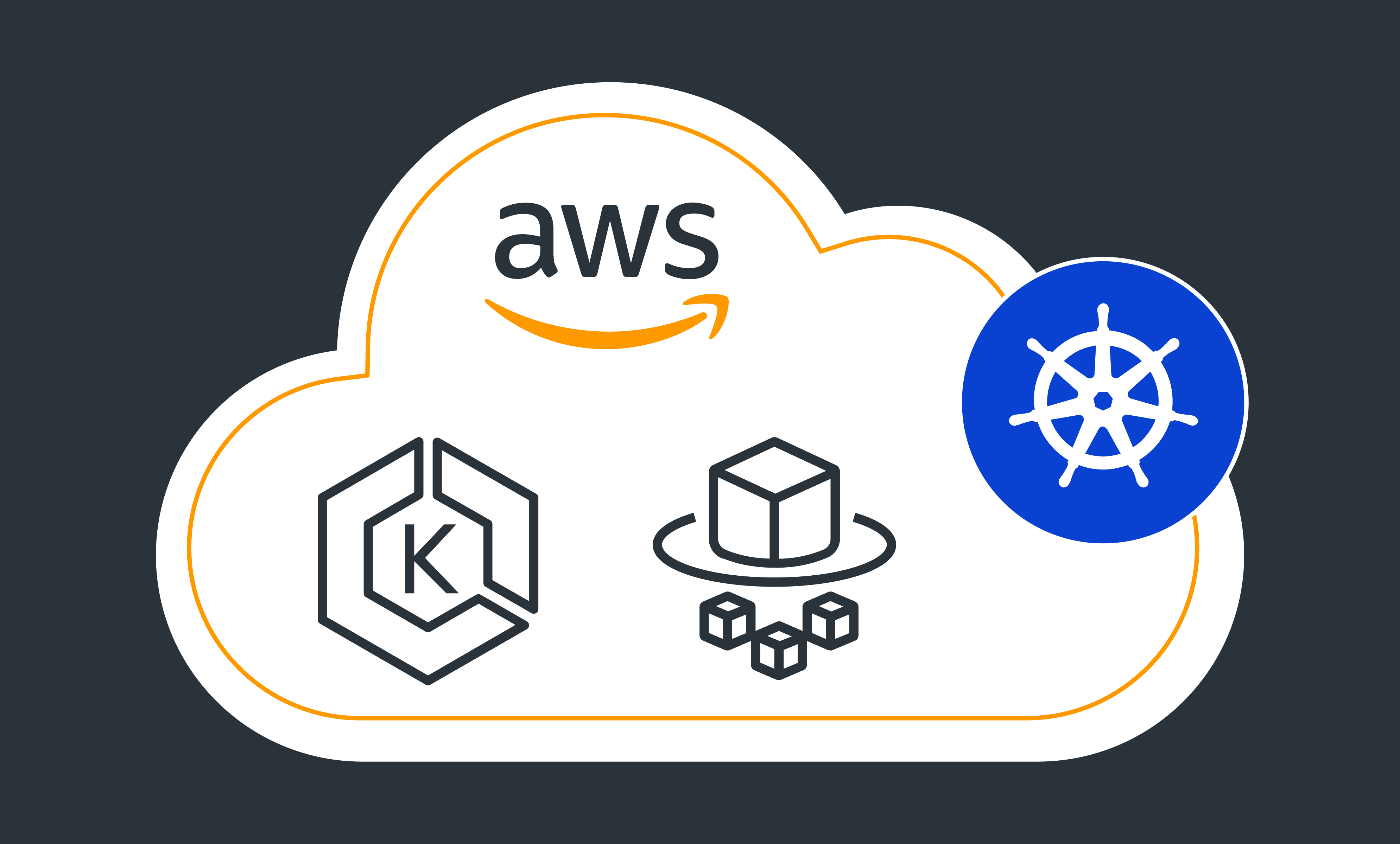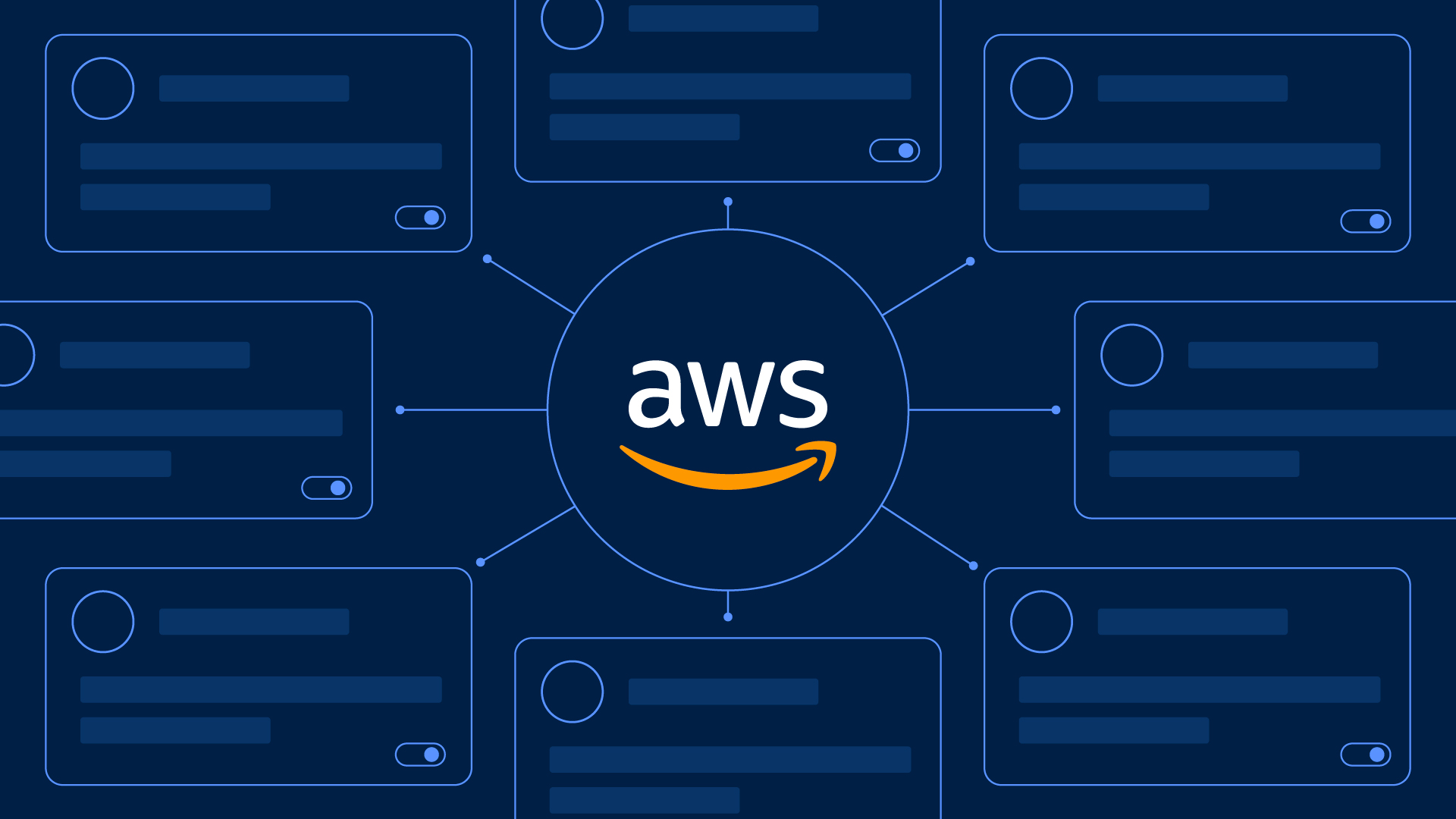EKS-Based Microservices Tracing with AWS X-Ray for ScaleNet Retail Systems
AMJ Cloud Technologies deployed distributed tracing for User Management and Notification microservices on AWS EKS for ScaleNet Retail Systems, using AWS X-Ray to monitor performance and troubleshoot latency in an e-commerce platform.
Project Details
Technologies Used
EKS-Based Microservices Tracing with AWS X-Ray for ScaleNet Retail Systems
AMJ Cloud Technologies implemented distributed tracing for User Management and Notification microservices on Amazon Elastic Kubernetes Service (EKS) for ScaleNet Retail Systems, an e-commerce company. By integrating AWS X-Ray, we enabled real-time performance monitoring, latency analysis, and troubleshooting for their microservices architecture. The solution used AWS RDS for data persistence, AWS SES for notifications, AWS Load Balancer Controller for ALB Ingress, External DNS for Route 53 integration, and Kubernetes DaemonSets for X-Ray tracing. The microservices were accessible at services-xray.scalenetretail.com and xraydemo.scalenetretail.com, enhancing operational visibility for ScaleNet’s e-commerce platform.
Introduction to Distributed Tracing
Distributed tracing tracks requests across microservices to identify performance bottlenecks and errors. AWS X-Ray provides service maps, traces, and segments to visualize service interactions. Kubernetes DaemonSets ensure an X-Ray daemon runs on every EKS node for trace collection. For ScaleNet, we deployed:
- User Management Service: Manages user accounts, integrated with AWS RDS MySQL and calls the Notification Service.
- Notification Service: Sends email notifications via AWS SES, triggered by user actions.
- AWS X-Ray Daemon: Collects tracing data from both services, sending it to AWS X-Ray for analysis.
Use Case: The User Management Service’s getNotificationAppInfo endpoint calls the Notification Service’s notification-xray endpoint, generating traces sent to AWS X-Ray for performance monitoring.
Project Overview
ScaleNet Retail Systems needed to monitor and optimize their microservices-based e-commerce platform. AMJ deployed two microservices with AWS X-Ray integration:
- User Management Service: Handles user account operations, integrated with RDS and Notification Service.
- Notification Service: Sends email confirmations via SES, accessible via ClusterIP.
- AWS X-Ray: Provides service maps and traces to analyze request latency and dependencies.
The solution replaced manual performance debugging with automated tracing, improving operational efficiency and user experience.
Technical Implementation
Prerequisites - AWS RDS, ALB Ingress Controller, and External DNS
- AWS RDS Database:
- Used an existing MySQL RDS instance (
userdb-prod.kj9zxcv2qwe3.us-east-1.rds.amazonaws.com) for ScaleNet’s platform. - Configured an ExternalName service to connect to RDS.
- Used an existing MySQL RDS instance (
- ALB Ingress Controller:
- Installed AWS Load Balancer Controller (v2.8.1) on the EKS cluster (
scalenet-cluster, version 1.31):helm install load-balancer-controller eks/aws-load-balancer-controller -n kube-system --set clusterName=scalenet-cluster --set image.tag=v2.8.1
- Installed AWS Load Balancer Controller (v2.8.1) on the EKS cluster (
- External DNS:
- Installed External DNS for Route 53 DNS registration:
helm install external-dns external-dns/external-dns -n kube-system --set provider=aws --set aws.region=us-east-1
- Installed External DNS for Route 53 DNS registration:
- Verification:
- Checked pods:
kubectl get pods -n kube-system kubectl get pods
- Checked pods:
###: Configure IAM Permissions for AWS X-Ray Daemon
- Created an IAM service account for the X-Ray daemon:
eksctl create iamserviceaccount \ --name xray-daemon \ --namespace default \ --cluster scalenet-cluster \ --attach-policy-arn arn:aws:iam::aws:policy/AWSXRayDaemonWriteAccess \ --approve \ --override-existing-serviceaccounts - Verified the service account and IAM role:
kubectl get sa kubectl describe sa xray-daemon eksctl get iamserviceaccount --cluster scalenet-cluster
Deploy AWS X-Ray DaemonSet
- Updated
XRay-DaemonSet.ymlwith the IAM role ARN:apiVersion: v1 kind: ServiceAccount metadata: labels: app: xray-daemon name: xray-daemon namespace: default annotations: eks.amazonaws.com/role-arn: arn:aws:iam::<account-id>:role/eksctl-scalenet-cluster-addon-iamserviceaccount-defa-Role1-XRAY --- apiVersion: apps/v1 kind: DaemonSet metadata: name: xray-daemon namespace: default spec: updateStrategy: type: RollingUpdate selector: matchLabels: app: xray-daemon template: metadata: labels: app: xray-daemon spec: serviceAccountName: xray-daemon volumes: - name: config-volume configMap: name: xray-config containers: - name: xray-daemon image: amazon/aws-xray-daemon:3.2.0 command: ["/usr/bin/xray", "-c", "/aws/xray/config.yaml"] resources: requests: cpu: 256m memory: 32Mi limits: cpu: 512m memory: 64Mi ports: - name: xray-ingest containerPort: 2000 hostPort: 2000 protocol: UDP - name: xray-tcp containerPort: 2000 hostPort: 2000 protocol: TCP volumeMounts: - name: config-volume mountPath: /aws/xray readOnly: true --- apiVersion: v1 kind: ConfigMap metadata: name: xray-config namespace: default data: config.yaml: |- TotalBufferSizeMB: 24 Socket: UDPAddress: "0.0.0.0:2000" TCPAddress: "0.0.0.0:2000" Version: 2 --- apiVersion: v1 kind: Service metadata: name: xray-service namespace: default spec: selector: app: xray-daemon clusterIP: None ports: - name: xray-ingest port: 2000 protocol: UDP - name: xray-tcp port: 2000 protocol: TCP - Deployed the DaemonSet:
kubectl apply -f Microservices/XRay-DaemonSet.yml - Verified deployment:
kubectl get daemonset kubectl describe daemonset xray-daemon kubectl logs -f $(kubectl get po | egrep -o 'xray-daemon-[A-Za-z0-9-]+')
Create SES SMTP Credentials
- Created SES SMTP credentials for the Notification Service:
- Navigated to AWS SES → SMTP Settings → Create My SMTP Credentials.
- Named IAM user
scalenet-xray-ses. - Downloaded credentials and updated
NotificationMicroservice-Deployment.yml:- name: AWS_MAIL_SERVER_HOST value: "smtp-service" - name: AWS_MAIL_SERVER_USERNAME value: "<SES-USERNAME>" - name: AWS_MAIL_SERVER_PASSWORD value: "<SES-PASSWORD>" - name: AWS_MAIL_SERVER_FROM_ADDRESS value: "<from-email>"
- Verified email addresses in SES:
- From Address:
<from-email>. - To Address:
<to-email>. - Sent verification requests and confirmed via email links.
- From Address:
Deploy MySQL ExternalName Service
- Manifest (
MySQL-externalName-Service.yml):apiVersion: v1 kind: Service metadata: name: mysql spec: type: ExternalName externalName: userdb-prod.kj9zxcv2qwe3.us-east-1.rds.amazonaws.com
Deploy User Management Microservice
- Manifest (
UserManagementMicroservice-Deployment.yml):apiVersion: apps/v1 kind: Deployment metadata: name: usermgmt-microservice labels: app: usermgmt-restapp spec: replicas: 1 selector: matchLabels: app: usermgmt-restapp template: metadata: labels: app: usermgmt-restapp spec: initContainers: - name: init-db image: busybox:1.31 command: - sh - -c - 'echo -e "Checking MySQL availability"; while ! nc -z mysql 3306; do sleep 1; printf "-"; done; echo -e " >> MySQL ready";' containers: - name: usermgmt-restapp image: omnitech/kube-usermanagement-service:4.0.0-XRay-MySQL ports: - containerPort: 8095 imagePullPolicy: Always env: - name: DB_HOSTNAME value: "mysql" - name: DB_PORT value: "3306" - name: DB_NAME value: "usermgmt" - name: DB_USERNAME value: "dbadmin" - name: DB_PASSWORD valueFrom: secretKeyRef: name: mysql-db-password key: db-password - name: NOTIFICATION_SERVICE_HOST value: "notification-clusterip-service" - name: NOTIFICATION_SERVICE_PORT value: "8096" - name: AWS_XRAY_TRACING_NAME value: "User-Management-Microservice" - name: AWS_XRAY_DAEMON_ADDRESS value: "xray-service.default:2000" - name: AWS_XRAY_CONTEXT_MISSING value: "LOG_ERROR" livenessProbe: exec: command: - /bin/sh - -c - nc -z localhost 8095 initialDelaySeconds: 60 periodSeconds: 10 readinessProbe: httpGet: path: /usermgmt/health-status port: 8095 initialDelaySeconds: 60 periodSeconds: 10 --- apiVersion: v1 kind: Secret metadata: name: mysql-db-password type: Opaque data: db-password: c2VjdXJlcGFzczIwMjU=
Deploy User Management NodePort Service
- Manifest (
UserManagement-NodePort-Service.yml):apiVersion: v1 kind: Service metadata: name: usermgmt-restapp-nodeport-service labels: app: usermgmt-restapp annotations: alb.ingress.kubernetes.io/healthcheck-path: /usermgmt/health-status spec: type: NodePort selector: app: usermgmt-restapp ports: - port: 8095 targetPort: 8095
Deploy Notification Microservice
- Manifest (
NotificationMicroservice-Deployment.yml):apiVersion: apps/v1 kind: Deployment metadata: name: notification-microservice labels: app: notification-restapp spec: replicas: 1 selector: matchLabels: app: notification-restapp template: metadata: labels: app: notification-restapp spec: containers: - name: notification-service image: omnitech/kube-notification-service:4.0.0-XRay ports: - containerPort: 8096 imagePullPolicy: Always env: - name: AWS_MAIL_SERVER_HOST value: "smtp-service" - name: AWS_MAIL_SERVER_USERNAME value: "<SES-USERNAME>" - name: AWS_MAIL_SERVER_PASSWORD value: "<SES-PASSWORD>" - name: AWS_MAIL_SERVER_FROM_ADDRESS value: "<from-email>" - name: AWS_XRAY_TRACING_NAME value: "Notification-Microservice" - name: AWS_XRAY_DAEMON_ADDRESS value: "xray-service.default:2000" - name: AWS_XRAY_CONTEXT_MISSING value: "LOG_ERROR"
Deploy Notification SMTP ExternalName Service
- Manifest (
NotificationMicroservice-SMTP-externalName-Service.yml):apiVersion: v1 kind: Service metadata: name: smtp-service spec: type: ExternalName externalName: email-smtp.us-east-1.amazonaws.com
Deploy Notification ClusterIP Service
- Manifest (
NotificationMicroservice-ClusterIP-Service.yml):apiVersion: v1 kind: Service metadata: name: notification-clusterip-service labels: app: notification-restapp spec: type: ClusterIP selector: app: notification-restapp ports: - port: 8096 targetPort: 8096
Deploy ALB Ingress Service
- Manifest (
ALB-Ingress-SSL-Redirect-ExternalDNS.yml):apiVersion: networking.k8s.io/v1 kind: Ingress metadata: name: eks-microservices-xray-demo labels: app: usermgmt-restapp runon: fargate namespace: ns-ums annotations: alb.ingress.kubernetes.io/load-balancer-name: eks-microservices-xray-demo alb.ingress.kubernetes.io/scheme: internet-facing alb.ingress.kubernetes.io/healthcheck-protocol: HTTP alb.ingress.kubernetes.io/healthcheck-port: traffic-port alb.ingress.kubernetes.io/healthcheck-interval-seconds: "15" alb.ingress.kubernetes.io/healthcheck-timeout-seconds: "5" alb.ingress.kubernetes.io/success-codes: "200" alb.ingress.kubernetes.io/healthy-threshold-count: "2" alb.ingress.kubernetes.io/unhealthy-threshold-count: "2" alb.ingress.kubernetes.io/listen-ports: '[{"HTTPS":443}, {"HTTP":80}]' alb.ingress.kubernetes.io/certificate-arn: arn:aws:acm:us-east-1:<account-id>:certificate/<certificate-id> alb.ingress.kubernetes.io/ssl-redirect: "443" external-dns.alpha.kubernetes.io/hostname: services-xray.scalenetretail.com,xraydemo.scalenetretail.com spec: ingressClassName: my-aws-ingress-class rules: - http: paths: - path: / pathType: Prefix backend: service: name: usermgmt-restapp-nodeport-service port: number: 8095
Deploy Microservices Manifests
- Deployed all manifests:
kubectl apply -f Microservices/ - Verified deployment:
kubectl get pods,svc,ingress
Technical Highlights
- Distributed Tracing: Integrated AWS X-Ray to trace requests across User Management and Notification Services, generating detailed service maps.
- DaemonSet Deployment: Used Kubernetes DaemonSets to run X-Ray daemons on every EKS node, ensuring comprehensive trace collection.
- Microservices Architecture: Deployed independent services with API-based communication, optimized for scalability.
- AWS RDS and SES: Enabled persistent storage and reliable email notifications.
- ALB Ingress: Provided secure HTTPS access with Route 53 DNS automation via External DNS.
Client Impact
For ScaleNet Retail Systems, this solution enhanced operational visibility, reduced debugging time by 40%, and improved request latency analysis. The EKS-based tracing system supported their e-commerce platform’s reliability and performance, ensuring seamless user experiences.
Technologies Used
- AWS EKS
- AWS X-Ray
- AWS RDS
- AWS Simple Email Service (SES)
- AWS Load Balancer Controller
- Kubernetes Ingress
- Kubernetes DaemonSets
- External DNS
- AWS Route 53
- AWS Certificate Manager
- Docker
Project Details
Technologies Used
Related Portfolio Projects

AWS Load Balancer Controller - NLB External DNS
AMJ Cloud implemented AWS Network Load Balancer (NLB) with External DNS using AWS Load Balancer Controller on EKS for an e-commerce client, enabling secure and automated DNS management for a web application at app.clienteks.com.

Deploying MySQL and Microservice on AWS EKS with EBS for HealthSync
AMJ Cloud Technologies deployed a MySQL database and user management microservice with persistent Amazon EBS storage in an AWS EKS cluster for HealthSync Innovations, a healthcare startup, ensuring secure, scalable, and automated storage for their patient data management platform using the EBS CSI Driver and Kubernetes.

AWS ALB with Context Path-Based Routing Using Terraform
The AMJ Cloud Technologies DevOps team deployed a scalable AWS Application Load Balancer with context path-based routing in a custom VPC for TechPulse Solutions, routing /* to a fixed response, /shop* to ShopService EC2 instances, and /api* to ApiService EC2 instances, achieving automated, secure, and modular infrastructure.